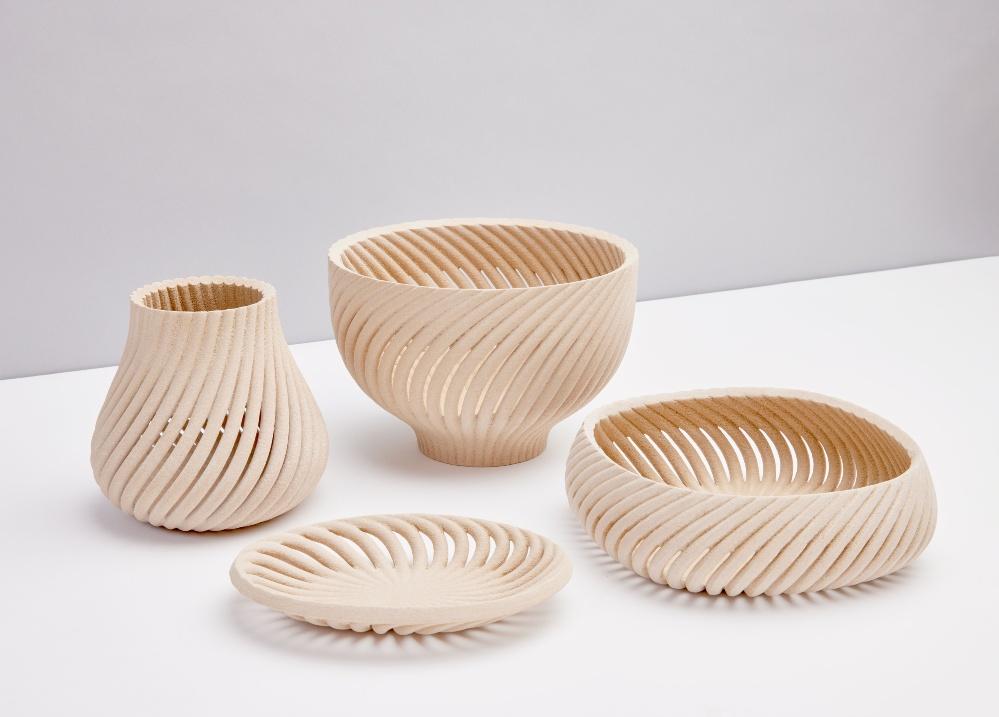- FMA
- The Fabricator
- FABTECH
- Canadian Metalworking
Our Publications
Categories
- Additive Manufacturing
- Aluminum Welding
- Arc Welding
- Assembly and Joining
- Automation and Robotics
- Bending and Forming
- Consumables
- Cutting and Weld Prep
- Electric Vehicles
- En Español
- Finishing
- Hydroforming
- Laser Cutting
- Laser Welding
- Machining
- Manufacturing Software
- Materials Handling
- Metals/Materials
- Oxyfuel Cutting
- Plasma Cutting
- Power Tools
- Punching and Other Holemaking
- Roll Forming
- Safety
- Sawing
- Shearing
- Shop Management
- Testing and Measuring
- Tube and Pipe Fabrication
- Tube and Pipe Production
- Waterjet Cutting
Industry Directory
Webcasts
Podcasts
FAB 40
Advertise
Subscribe
Account Login
Search
Desktop Metal adapts binder-jetting technology to print wood objects
- May 14, 2021
- News Release
- Additive Manufacturing

Swiss industrial designer Yves Béhar is the first to design an exclusive collection of home goods using the Forust process. Images: Business Wire
3D printer builder Desktop Metal has launched Forust, a new process for printing functional end-use wood parts. The process, based on the company’s patented single-pass binder-jetting additive manufacturing technology, uses waste byproducts from wood manufacturing (cellulose dust) and the paper industry (lignin).
Unlike particle board or laminate products, Forust produces a wooden part with a digital grain that flows throughout the entire part. It can be sanded or finished another way, reports Desktop Metal. The system’s software has the ability to digitally reproduce nearly any wood grain, including rosewood, ash, zebrine, ebony, and mahogany.
According to Ric Fulop, founder and CEO of Desktop Metal, today there are many applications where polymers and plastics could be cost-effectively replaced with sustainably manufactured wood parts, including luxurious, high-end interior components, consumer electronics, instruments, and boats.
“For the first time, we can produce beautiful parts with the same durability and characteristics you would have in traditionally manufactured wood but printed using upcycled materials, which do not require cutting down or harvesting trees,” said Folup. “For each tree saved, we are reducing the carbon footprint by a metric ton over its lifetime.”
This report was excerpted from a Business Wire press release.
- Podcasting
- Podcast:
- The Fabricator Podcast
- Published:
- 04/30/2024
- Running Time:
- 53:00
Seth Feldman of Iowa-based Wertzbaugher Services joins The Fabricator Podcast to offer his take as a Gen Zer...
- Trending Articles
- Industry Events
Pipe and Tube Conference
- May 21 - 22, 2024
- Omaha, NE
World-Class Roll Forming Workshop
- June 5 - 6, 2024
- Louisville, KY
Advanced Laser Application Workshop
- June 25 - 27, 2024
- Novi, MI
Precision Press Brake Certificate Course
- July 31 - August 1, 2024
- Elgin,

























